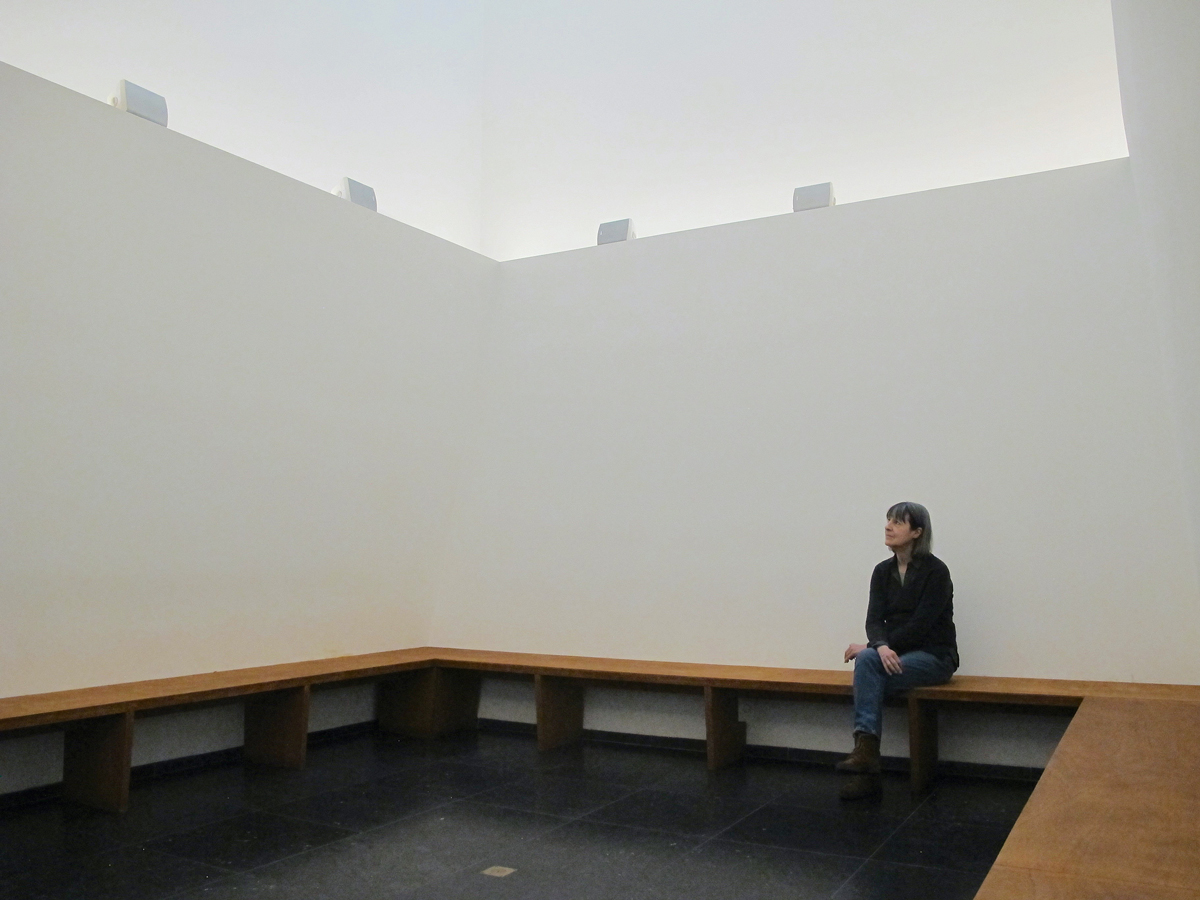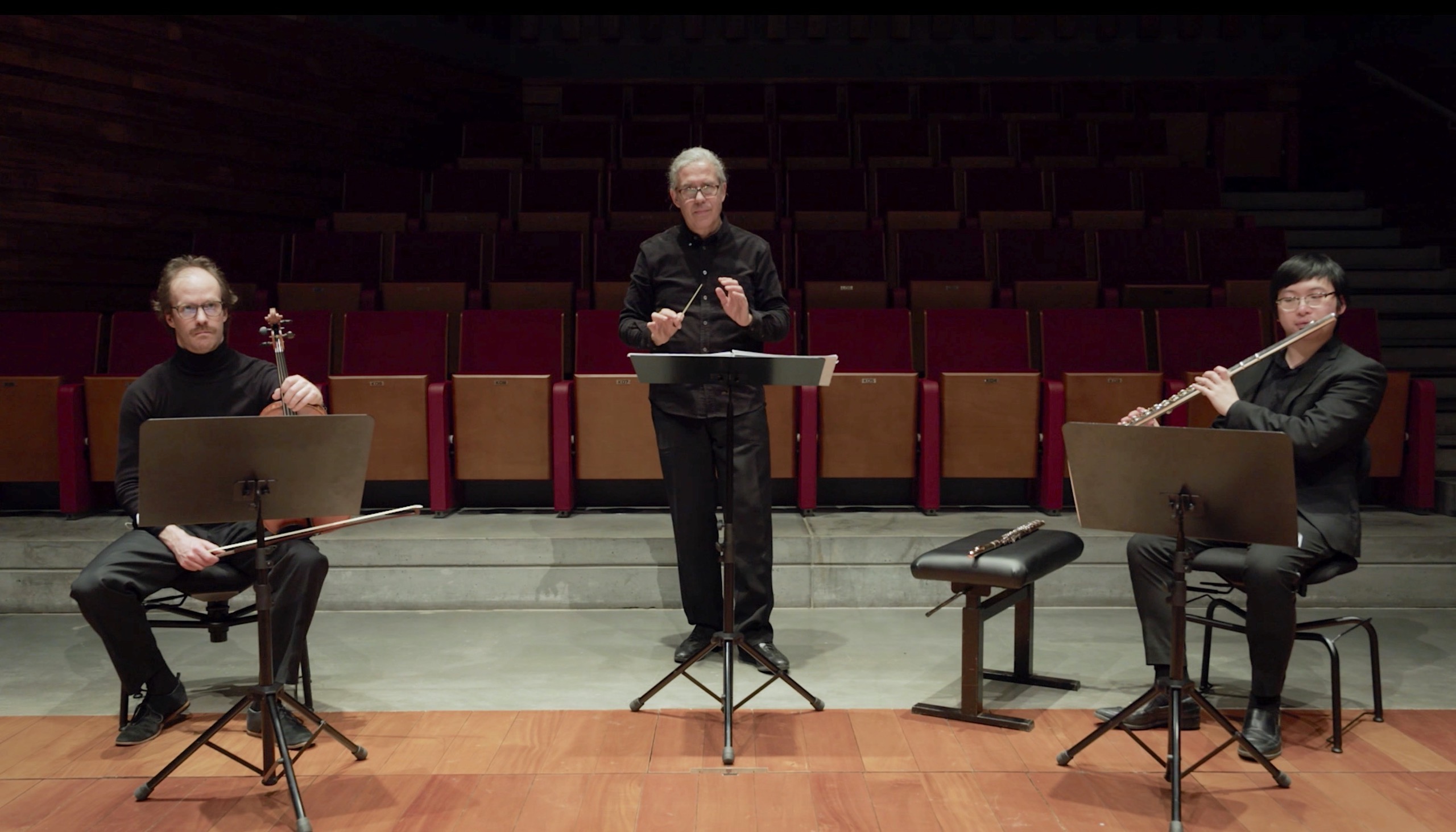Quattro pezzi su una nota sola
—
Quattro pezzi su una nota sola
by Giacinto Scelsi
—
2021
MICHEL LORAND – MUSIQUES NOUVELLES
Sound installation, 2021
Giacinto Scelsi’s Quattro pezzi su una nota sola (1959) is made up of four movements for large orchestra, each using a single note modulated from within. The sound material is simultaneously form and work. This composition creates a conception of time that unfolds in a large, continuous circular movement, a kind of unmoving movement. This installation’s sound was recorded from the center of twenty-six musicians in a circle. Each piece was recorded by a microphone that turns on its axis, traveling clockwise around the entire circle. This piece as recorded at the Arsonic in 2022. It is played by the musicians of Musiques Nouvelles accompanied by students from the Conservatoire de Mons conducted by Jean-Paul Dessy.
At the end of the 1940s, Giacinto Scelsi suffered a mental health crisis that led to him being committed. He spent hours at the piano, repeating the same note on the keyboard, concentrating his attention on the sound. He described the experience as fundamental: “You have no idea what there is in a single sound! … It is by playing a note for a long time that it becomes big. It becomes so big that you hear many more harmonics and it grows inside. The sound envelops you. In the sound, you discover an entire universe, with harmonics that you’ve never hear. Sound fills the room you’re in. You’re swimming inside it.”1
This dispositif suggest being at the heart of the music. With this piece, Scelsi introduced a revolution of unprecedented depth: it was no longer a question of listening to a sequence of sounds, but to the sound itself. Each of these pieces uses a single note, and this note is modulated, agitated, all from within, so that the compositional process really takes place within the sound, rather than being the result of a combination of sounds. As a result, the background, the sound material, is at once the form and the work. Composition thus becomes a new language whose quest is the exploration of a motionless music.
1 Marie-Cécile Mazzoni, Marc Texier, and Franck Mallet, “Conversations avec Giacinto Scelsi” (1987), in Giacinto Scelsi, Les anges sont ailleurs : textes et inédits (Actes Sud, 2006), p. 77.
—






